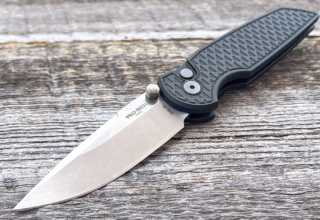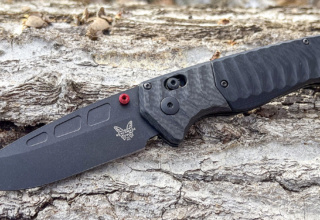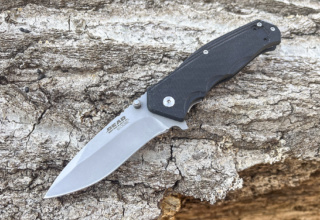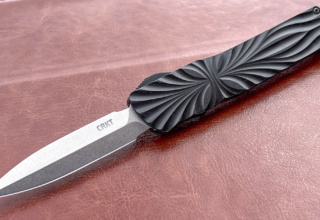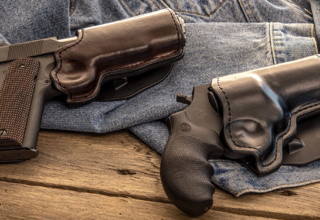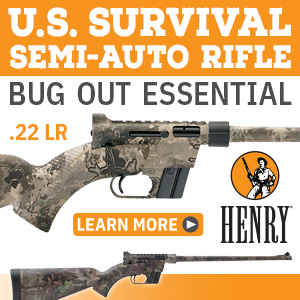Frustrated with keeping an edge on your hunting, EDC, or special-purpose knives? It might be the steel they’re made from. Here’s what you need to know to keep a sharp edge…
article by Dexter Ewing, photos by Marty Stanfield (Marty Stanfield Photography)
If you’ve ever shopped for a good pocketknife or hunting knife, you probably know that there are multiple grades of blade steels available on factory knives. Confused? You’re not alone. To help, we’re going to examine a few of the common blade steels available on the market and what it takes to sharpen them.
Keep in mind that blade shapes also influence the choice of sharpener you use. Sharpening isn’t rocket science, nor is it easy-peasy. Like any other skill, it takes practice. It takes making mistakes and learning from them. It takes patience and time. All that is required is the desire to learn and you’re halfway there. As help to those who wish to learn, we will provide you with some examples and tips in this article.
A common steel used in pocketknives and general outdoor knives is 1095 carbon steel. When I say outdoor knives, this is a broad term that encompasses folders and fixed blades used for hunting, camping, hiking, and similar activities. This type of steel is inexpensive to manufacture, so it allows knife makers to offer a functional knife for minimal price.

For the user, not only does 1095 steel mean a knife that won’t wreck your budget but also a knife that is easy to sharpen. Those pocketknives your father or grandfather sharpened on a whetstone — they were made of carbon steel. Easy to sharpen.
Not as easy to sharpen is stainless steel because the added elements make stainless steel harder than carbon steel, stainless (of course), and resistant to rust. Lacking these elements, it is recommended to keep a light film of oil on the surface of carbon steel blades to prevent moisture from collecting on the blade and promoting rust.
Because 1095 is very easy to sharpen, it is an ideal blade steel to learn sharpening skills. You can take a knife with a 1095 blade and sharpen it while out in the field or in hunting camp.
The Bear & Son CRSB47 Large Stockman with red stag bone handles is a great example of a pocketknife with 1095 steel. It’s a beautiful knife, with its bone surface carved to simulate stag horn. The red hue adds a warm visual touch. Nickel silver bolsters and nickel silver shield round out the comfortable look.
For a knife like this, the GATCO Super Micro-X pull-through sharpener works best. Pull through sharpeners are easy to use. Insert the blade into V-shaped slot and pull it through with firm pressure. Repeat until the edge is sharp. Featuring two grits of Medium and Fine grit ceramic sharpening rods held at a pre-set angle, the Super Micro-X takes the guesswork out of sharpening.
Start with the Medium grit to establish the fresh cutting edge and then flip it over for the Fine grit, which will hone the edge to razor sharpness. Expect a few minutes for each grit stage. The rods are securely housed in a durable ABS plastic casing with anti-skid rubber feet and textured rubber gripping areas, adding stability and safety to the sharpening process. This sharpener is small enough to fit into a toolbox, tackle box, glove compartment, backpack, or jacket pocket so it is always handy. MSRP is $8.99.
One of the more commonly used stainless steels found in working grade pocketknives, hunting knives, kitchen knives, and tactical folders is 440A stainless steel. It generally has good corrosion resistance properties mixed in with good edge holding capability. As for maintenance, 440A is easy to sharpen because it isn’t a hard steel. Like 1095, it is a steel that is economical to purchase and easy to work with. Do not, however, confuse 440A with its higher-grade relative, 440C. These are two different steels!

A great example of a knife with 440A blade is the Bear & Son Pattern 102 tactical folder. Its 440A recurve clip point blade measures 3 ⅜ inches in length, making this folder an ideal size for a work knife or everyday carry. Blade deployment is quick when using either the protruding flipper tab or the ambidextrous thumb studs. The handle is OD green G-10 with dual-nested liners, providing a solid backbone.
Sharpening of this recurve clip point cutting edge requires a round profile sharpener to capture all of the edge curve. The GATCO Scepter 2.0 is perfect for this type of blade profile.
Starting at the blade tang, lay the blade on the sharpener and, with light pressure, push the blade down the sharpening rod while pulling outward on the handle. This allows the entire length of the cutting edge to be sharpened. Pull the blade through until you reach the blade tip and stop. Repeat this motion for one side and flip the handle over and repeat for the other side.

The Scepter 2.0 also works well for bigger blades such as Bear & Son’s Bear Edge Compact Bowie. Sporting a five-inch modified clip point blade of 440A stainless, the classic Bowie clip point shape is scaled down for ease of carry while providing enough blade length to tackle large cutting tasks.

The handle of the Compact Bowie is machined black G-10. A full tang handle construction ensures full strength of the knife from end to end, lending a very solid feel and heft. Again, as with the model 102 folder, you would use the Scepter 2.0 in the same manner for this type of knife. If your cutting edge is exceptionally worn, you can use the pull-through carbides included on the sharpener to quickly and easily reset the edge then follow up with strokes on the diamond rod.
Pairing the fixed blade with a compact sharpener like the Scepter 2.0 makes sense, especially if you are on a camping trip or a day hike. The Scepter 2.0 will tuck away easily into any sort of baggage, backpack, or toolbox. Comparing 440A to the previously mentioned 1095, it is a step or two up due to the stainless properties, plus you can use a ceramic sharpener like the Super Micro-X or a diamond sharpener.

It’s easy to see why manufacturers have used 440A widely in a lot of their knives aimed at the trades or outdoor sporting activities. The Scepter 2.0 has an MSRP of $42.45. The model 102 folder retails for $63.99 and the Compact Bowie has an MSRP set at $52.99.
Now, we venture into the realm of the high-end blades. This is where you fully comprehend that high quality and ultra durability come with a price tag. You are willing to spend a bit more to obtain a high-quality tool that will go the distance and last for years to come, even after repeated hard use. When you buy a premium factory knife, expect it to have a premium stainless steel blade that is exceptionally wear resistant. Consequently, this resistance to wear translates into difficulty of sharpening.
One premium steel used in the top tier of factory knives is CPM-S30V, otherwise referred to as S30V. Without getting too technical, what sets S30V apart from the rest is how it is made. The process results in an evenly distributed and dense carbide network making up the steel. This is why it is so wear resistant.

The Bear & Son Bear Ops Rancor II tactical folder sports a 3-inch blade of premium S30V steel in a modified clip point pattern. The blade features flipper action opening with ball bearings in the blade pivot to promote ultra-smooth and fast-opening action. The handle is machined from black G-10, with dual-nested steel liners to give the handle added strength. A pocket clip supports the knife comfortably in the pocket.
S30V is some tough stuff. It will go the distance, and when lesser-grade steel peter out, S30V has the horsepower to keep on going.
To sharpen S30V, expect to use nothing less than diamond sharpening media. Diamond cuts aggressively into the steel and, unlike other sharpening media, it lasts indefinitely with proper care of the sharpener.

GATCO’s Edgemate Diamond Sharpening kit is a great choice to tackle S30V. This is one of the best manual sharpening kits out there. It includes a blade clamp that has built-in angle guides. The various grits of diamond stones have guide rods affixed to them. After your blade is securely clamped in place, select an angle degree to use, insert the guide rod into the hole, and away you go. This system holds the stone at a consistent angle, so it takes the guesswork out of sharpening. Use a push-pull motion while covering the entire length of the cutting edge.
The GATCO Edgemate Diamond System is comprehensive. You get Coarse, Medium, and Fine grits of diamond, an ultrafine ceramic polishing hone, and a triangular ceramic hone for serrations. Grit progression should begin with coarse grit for a dull edge. Once you have a basic edge started, switch over to medium to dial in the sharpness. Finish up with fine grit to polish and further refine the edge. The ultrafine is optional and will result in a polished edge. The entire kit stores neatly inside of the included hard plastic carry case.
The key to successfully maintaining a sharp S30V blade, regardless of the sharpener you use, is to switch your thinking from “sharpening” to “edge maintenance.” With sharpening, you are waiting for the blade to go completely dull before addressing it. With edge maintenance, you are jumping onto it just when the edge loses its bite but not its form. At that stage, it is easier to keep a sharp edge and the integrity of the original cutting edge is left intact. This will work for any grade of steel but is essential for staying on top of super steels like S30V.
The Edgemate Diamond Kit has an MSRP of $105.25. The Bear Ops Rancor II folder retails for $79.99.
So, now you know what it takes to sharpen some of the popular blade steels in today’s hunting knives, pocketknives, tactical knives, and all working folders. The key is having the right sharpener for your budget as well as your blade construction. Once you have that, you’ve won half the battle. The other half is learning to use your sharpener effectively. Just remember that any sharpening is inherently dangerous, so devote your full attention to what you are doing — never rush to finish and never sharpen when you are tired, sleepy, or have been drinking.
Take your time to work on a blade and keep in mind that some steels require longer to sharpen than others. It is a good idea to sharpen at a table or desk and have plenty of light to see what you are doing. Once you get comfortable with your sharpening skills, you’ll find it rewarding and possibly even relaxing.






